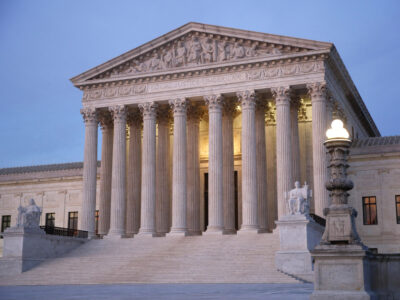After Loper: The Primacy of Skidmore
Legal Planet: Environmental Law and Policy 2024-07-10

One thing about the Loper Bright decision is obvious: it overruled Chevron. So much for past law. What about the future? How should courts review agency regulations now that Chevron is gone? As I discuss in a later post, regulations that were upheld by the courts during the Chevron era have some protection, but new regulations will be fully subject to Loper rather than Chevron. The general refrain in the Loper opinion is “Skidmore deference.” What does that mean and when does it apply?
Skidmore was decided eighty years ago. The issue was whether a company’s fire crew should get paid for the nights they were required to stay on the premises in case a fire broke out. Should they get paid for the whole night, or only the time actually spent responding to alarms? A federal agency was charged with enforcing the minimum wage law, and it had evolved a theory about how to deal with the issue of waiting time. The Court said that the agency’s theory wasn’t binding but that there were good reasons to rely on it: “We consider that the rulings, interpretations, and opinions of the Administrator under this Act, while not controlling upon the courts by reason of their authority, do constitute a body of experience and informed judgment to which courts and litigants may properly resort for guidance.” The Court added: “The weight of such a judgment in a particular case will depend upon the thoroughness evident in its consideration, the validity of its reasoning, its consistency with earlier and later pronouncements, and all those factors which give it power to persuade, if lacking power to control.”
In Loper Bright, the Court endorsed Skidmore as the proper approach to statutory interpretation. Although in the end courts must make their own judgment about the meaning of a statute, the Court explained that “in exercising such judgment, though, courts may—as they have from the start—seek aid from the interpretations of those responsible for implementing particular statutes.” “Such interpretations,” the Court said, “‘constitute a body of experience and informed judgment to which courts and litigants may properly resort for guidance’ consistent with the APA. Skidmore, 323 U. S., at 140.” Tracking Skidmore, the Court added that “interpretations issued contemporaneously with the statute at issue, and which have remained consistent over time, may be especially useful in determining the statute’s meaning.” The Court also said that an agency interpretation may be especially informative “to the extent it rests on factual premises within the agency’s experts.” All of this adds up to an admonition that judges pay serious attention to the agency’s view of a statute — with just how serious depending on the circumstances.
In a previous post, I discussed what the Court had to say about statutes that delegate the power to an agency to interpret terms or fill gaps. Skidmore is clearly the controlling test for all other statutes. But deciding whether a case falls within the “delegated power” category is itself a question of statutory interpretation. As such, it should be subject to the Skidmore test, giving the agency’s views some weight in the court’s determination of the delegated power question.
Some commentators have tended to write off Skidmore and assume that judges will ignore agency views after Loper Bright. That is a misreading of the Court’s opinions in Loper and in Skidmore itself.
Tomorrow: Loper’s Grandfather Clause